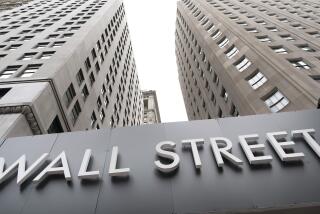Small-Cap Stocks: No ‘January Effect’
- Share via
For the sixth straight year, small-company stocks failed to outperform shares of large blue chips in January--a month in which small-caps have traditionally shined.
Their disappointing performance lends credence to the growing belief that the so-called January effect--the long-held theory that small caps always rally strongly in the first month of every year--is now dead.
And it’s yet another sign that the 1990s bull market may be nearing an end, some stock market strategists argue.
“Most bull markets blow themselves up by becoming narrower and narrower,” said Chuck Zender, a managing director of Leuthold Group, referring to the fact that in recent months a handful of mega-cap growth stocks have virtually propped up the entire stock market.
“Had we seen a January effect this year, it would have made a much better case for the continuation of the bull market,” he said.
Adds Thomas McDowell, partner at Rice Hall James in San Diego and co-manager of the UAM Rice Hall James Small Cap Portfolio: “It does make the market look a little chancy.”
In 60 of the previous 73 Januarys, small-cap stocks (commonly defined as companies with market capitalizations of $1 billion or less) outperformed their large-cap cousins.
And for the first half of this January, small-caps looked as though they would hold up better than large caps.
But for the full month, the Russell 2,000 index of small stocks advanced 1.3%. Large stocks, as measured by the Standard & Poor’s 500 index of blue chips, gained more than three times as much.
If measured against the S&P; 600 index of small-cap stocks, the gap between large-caps and small-caps was even wider. That’s because the S&P; small-cap index lost 1.3% last month.
At the same time, many mutual fund companies continue to report relatively weak demand for small-company stock funds.
Zender argues that the January effect is taking place earlier and earlier--that is, in the fourthquarter--in part as investors have become aware of, and are now anticipating, a small-stock rally.
This time around, Zender argues, the January effect may have taken place in October. Between Oct. 8 and Nov. 6, for instance, the Russell 2,000 rocketed 29.1%, rebounding from the late summer bear market dive.
More to Read
Inside the business of entertainment
The Wide Shot brings you news, analysis and insights on everything from streaming wars to production — and what it all means for the future.
You may occasionally receive promotional content from the Los Angeles Times.









